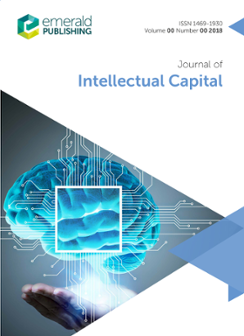Genesis of an innovation-based entrepreneurial ecosystem: exploring the role of intellectual capital
IF 6.8
2区 管理学
Q1 BUSINESS
引用次数: 8
Abstract
PurposeThe aim of the study is to explore the genesis of entrepreneurial ecosystems (EE) and highlight the role played by intellectual capital (IC) in that process. Specifically, the paper adopts the collective intelligence approach, and the study shows how human capital (HC), structural capital (SC) and relational capital (RC) interact to create an entrepreneurial ecosystem.Design/methodology/approachThe paper adopts a single case study of an Italian EE. The data analysis is based upon the collection of different sources of data: semi-structured interviews with representatives of each actor of the ecosystem; email correspondence; meetings report; a 24-months period of direct observation. Given the novelty of the topic, the qualitative method seems well suited for studying innovation-based EE since the method offers rich data about a phenomenon in real-life context.FindingsThe case is a top-down, innovation-based EE in which all main components of the IC play a crucial role from the initial stage. Findings show how the constant interchange between IC components occurs at two different levels: the micro and the meso level. HC and RC play major roles at both levels, whilst SC only occurs at a meso level, representing the environment in which the whole ecosystem takes place. Additionally, the use case, a new intangible asset integrating all three components of IC, emerged as one of the main outcomes of this innovation-based EE.Originality/valueThe paper contributes to a rather unexplored topic in the existing literature on EE and IC, namely the formation process of EE and the role played by IC within that process. Additionally, through the application of the collective intelligence approach, the authors shed light on the need to manage IC at both micro and meso level in the creation of an EE.基于创新的创业生态系统的起源:探索智力资本的作用
目的本研究的目的是探索创业生态系统(EE)的起源,并强调智力资本(IC)在这一过程中发挥的作用。具体而言,本文采用集体智能方法,研究了人力资本(HC)、结构资本(SC)和关系资本(RC)如何相互作用,以创建创业生态系统。设计/方法论/方法本文采用了一个意大利EE的单一案例研究。数据分析基于不同数据来源的收集:对生态系统中每个参与者的代表进行半结构化访谈;电子邮件通信;会议报告;24个月的直接观察期。鉴于该主题的新颖性,定性方法似乎非常适合研究基于创新的EE,因为该方法提供了关于现实生活中一种现象的丰富数据。发现案例是一个自上而下、基于创新的EE,IC的所有主要组件从初始阶段起就发挥着至关重要的作用。研究结果表明,IC组件之间的持续交换是如何在两个不同的层面上发生的:微观层面和微观层面。HC和RC在这两个层面上都发挥着重要作用,而SC仅发生在中尺度层面,代表了整个生态系统所处的环境。此外,用例,一种集成了IC所有三个组成部分的新无形资产,是这种基于创新的EE的主要成果之一。原始性/价值本文为现有关于EE和IC的文献中一个相当未探索的主题做出了贡献,即EE的形成过程以及IC在该过程中所扮演的角色。此外,通过集体智能方法的应用,作者阐明了在创建EE时在微观和微观层面管理IC的必要性。
本文章由计算机程序翻译,如有差异,请以英文原文为准。
求助全文
约1分钟内获得全文
求助全文
来源期刊

Journal of Intellectual Capital
Multiple-
CiteScore
14.50
自引率
13.30%
发文量
27
期刊介绍:
The Journal of Intellectual Capital is a peer-reviewed international publication dedicated to the exchange of the latest research and best practice information on all aspects of creating, identifying, managing and measuring intellectual capital in organisations. The journal publishes original research and case studies by academic, business and public sector contributors on intellectual capital strategies, approaches, frameworks, tools, techniques and technologies in order to increase the understanding of intellectual capital within the context of the modern knowledge economy. The focus of this journal is on the identification of innovative intellectual capital strategies and the application of theoretical concepts to real-world situations.
 求助内容:
求助内容: 应助结果提醒方式:
应助结果提醒方式:


